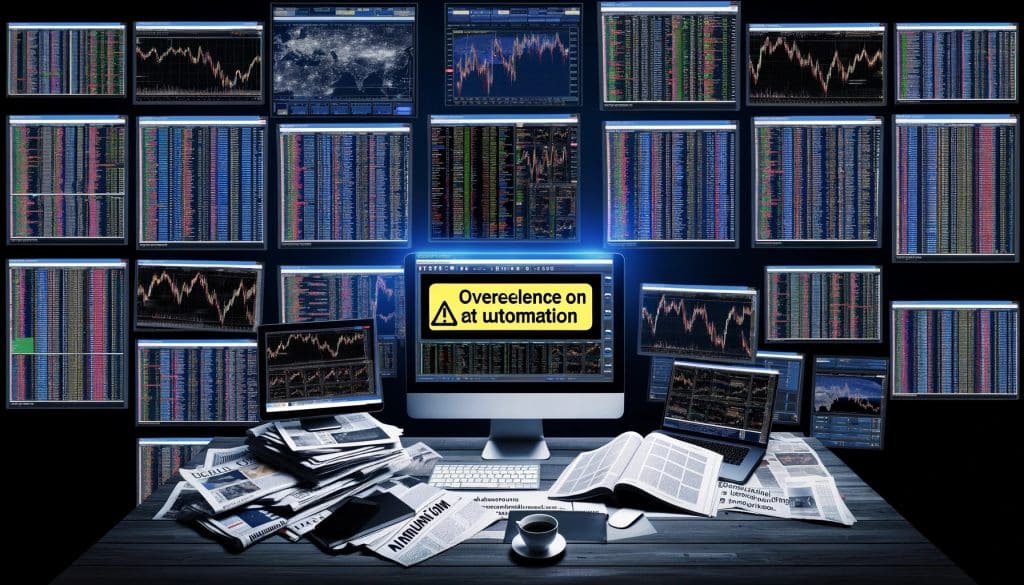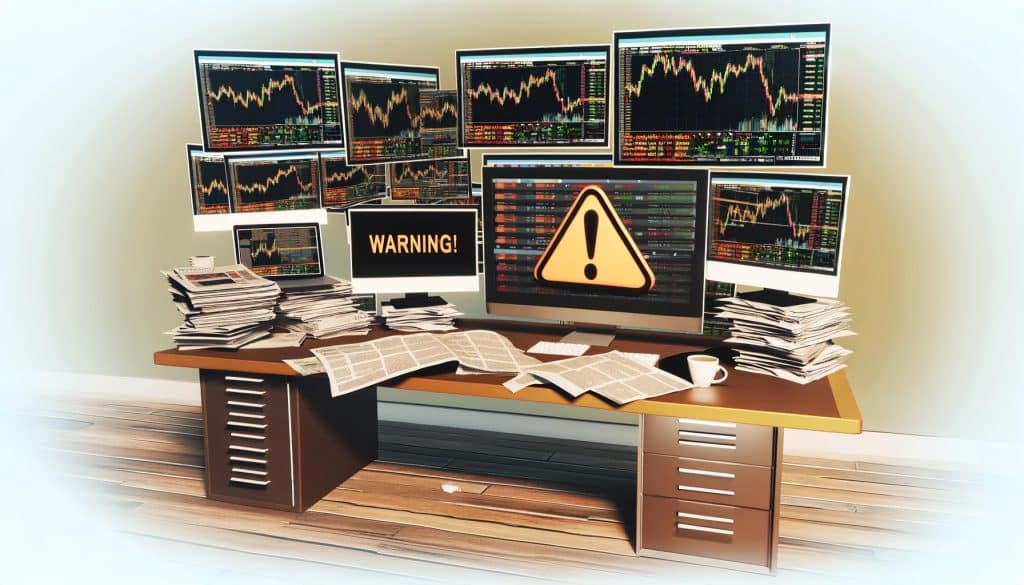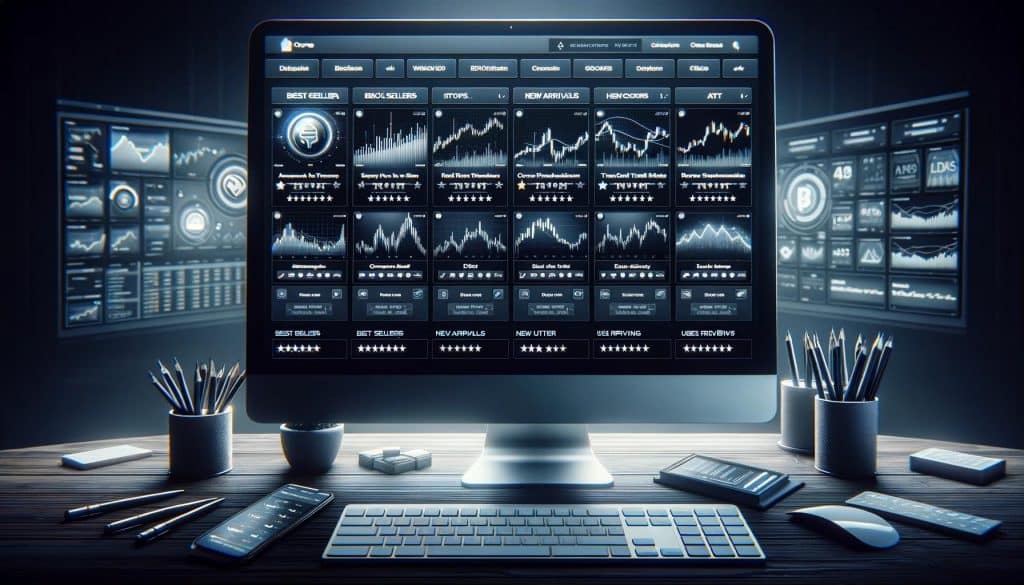Automated forex trading has emerged as a beacon of hope for traders looking to leverage the 24/7 nature of the global currency markets. By automating strategies, traders can execute trades based on specific criteria without constant monitoring. However, this technological advantage can quickly turn into a pitfall if certain common mistakes are not avoided. This detailed guide delves into the top automated trading mistakes in the forex market, providing actionable advice and examples to help you navigate the complex landscape of automated trading.
Understanding the Basics of Automated Forex Trading
Before we explore the common pitfalls, it’s crucial to grasp the fundamentals of automated forex trading. At its essence, this trading form uses algorithms and software to analyze the market and execute trades based on predefined conditions. While it offers the promise of efficiency and effectiveness, the path is fraught with challenges that can undermine success.

The Most Common Automated Trading Mistakes
1. Lack of Comprehensive Strategy Testing
Example: Consider a trader who designs an algorithm based on a strategy that shows profitability in a bullish market. Without thorough backtesting across various market conditions—bearish, volatile, and flat—the strategy may fail when the market sentiment changes.
Solution: Conduct extensive backtesting using historical data across different market conditions. Additionally, forward testing (paper trading) in a live market without real money can offer insights into how a strategy adapts to current market dynamics.
2. Overreliance on Automation and Underestimating Market Volatility
Example: A trader sets an automated system to execute trades based on technical indicators without considering geopolitical events that can cause market volatility.
Solution: Integrate dynamic risk management rules and news filters into your automated system to adapt to sudden market changes. Regularly review and adjust the parameters of your automated system to align with ongoing market conditions.
3. Ignoring the Need for Continuous Software and Algorithm Updates
Example: An algorithm based on a specific market pattern may become obsolete as market dynamics evolve. Failing to update the software can lead to degraded performance.
Solution: Regularly review and update your trading algorithms and software to ensure they remain effective. Incorporate feedback loops into your system to identify when updates are necessary.
4. Overlooking the Importance of a Robust Risk Management Strategy
Example: Utilizing high leverage without adequate stop-loss orders can result in significant losses, especially when a trade moves against your position.
Solution: Implement strict risk management protocols, including stop-loss and take-profit orders, to protect your capital. Consider using a risk-reward ratio that aligns with your trading strategy and risk tolerance.
5. Failing to Consider Transaction Costs
Example: High-frequency trading strategies can generate significant profits but also incur substantial transaction costs, which can erode profitability.
Solution: Evaluate the impact of transaction costs on your trading strategy and adjust your approach to balance frequency and cost efficiency.
6. Not Giving Due Importance to Broker Selection
Example: Choosing a broker with high spreads and slippage can significantly impact the execution of your trades, particularly for strategies that depend on tight spreads.
Solution: Select a broker that offers competitive spreads, low slippage, and reliable trade execution. Research and compare brokers to find one that best suits your automated trading needs.
7. Neglecting the Psychological Aspects of Trading
Example: The feeling of detachment from the trading process can lead to complacency, making it tempting to ignore the need for ongoing supervision and intervention when necessary.
Solution: Maintain an active role in monitoring your automated trading systems. Stay informed about market conditions and be prepared to intervene manually if your system does not respond as expected.

Incorporating Automated Trading Mistakes into Your Strategy
Understanding and addressing these common mistakes is only the beginning. The real challenge lies in integrating this knowledge into your automated trading strategy. This involves a continuous cycle of learning, testing, and refining to ensure your approach remains effective and resilient against the market’s unpredictability.
Automated Trading Mistakes: A Recap
In summary, successful automated forex trading requires more than just setting up algorithms and letting them run. It demands a proactive approach to strategy testing, risk management, software maintenance, and broker selection, combined with an awareness of the psychological aspects of automated trading. By acknowledging and addressing these common mistakes, traders can enhance their chances of achieving long-term success in the forex market.

FAQs on Automated Trading Mistakes
How often should I update my automated trading algorithm?
Updating your trading algorithm should be based on the performance metrics and the changing dynamics of the forex market. A good practice is to review your algorithm’s performance quarterly and after any major market events. However, if your system includes machine learning components that adapt to market conditions, continuous monitoring is essential to ensure it’s performing as expected.
Is it necessary to understand forex trading before using automated systems?
Yes, understanding the basics of forex trading, including market analysis, risk management, and trading psychology, is crucial even when using automated systems. This foundational knowledge enables you to make informed decisions about strategy selection, system customization, and interpreting the results of your automated trading activities.
Can I use multiple automated trading strategies at once?
Using multiple strategies can diversify your trading approach, potentially reducing risk and increasing opportunities for profit. However, managing multiple strategies requires careful coordination to ensure they don’t counteract each other and to manage the overall risk exposure effectively. Start with a single strategy and gradually add more as you become comfortable with their management and integration.
How do I know if my automated trading strategy is overfit?
An overfit strategy performs exceptionally well on historical data but poorly in live trading. To detect overfitting, use out-of-sample testing and cross-validation techniques. Divide your historical data into two parts: use one for developing the strategy and the other for testing it. If the strategy performs significantly worse on the test data, it may be overfit.
What role does leverage play in automated forex trading?
Leverage in forex trading allows you to control a large position with a relatively small amount of capital. While it can amplify profits in automated trading, it also increases the risk of substantial losses. Use leverage cautiously, considering the volatility of the forex market and the specific risks associated with your trading strategy.
How can I mitigate the risks of technical failures in automated trading?
To mitigate technical risks, ensure you have a reliable internet connection and use a Virtual Private Server (VPS) to run your trading platform. This minimizes the risk of downtime and delays in trade execution due to internet or power issues. Additionally, have a manual intervention plan in place in case your automated system fails.
What are the key indicators to monitor the performance of an automated trading system?
Key performance indicators for automated trading systems include the profit factor (gross profits divided by gross losses), the maximum drawdown (the largest peak-to-trough decline in the account’s balance), and the Sharpe ratio (a measure of risk-adjusted return). Monitoring these indicators can help you assess the system’s effectiveness and make necessary adjustments.
By understanding these aspects of automated forex trading, traders can better navigate the complexities of using algorithms and software to execute trades, enhancing their chances of success in the forex market.

Conclusion
Automated forex trading offers a path to potentially profitable trading opportunities, but it’s not without its pitfalls. By understanding and avoiding common automated trading mistakes, traders can significantly improve their chances of success. Remember, the key to effective automated trading lies in continuous learning, adaptation, and a disciplined approach to risk management.





